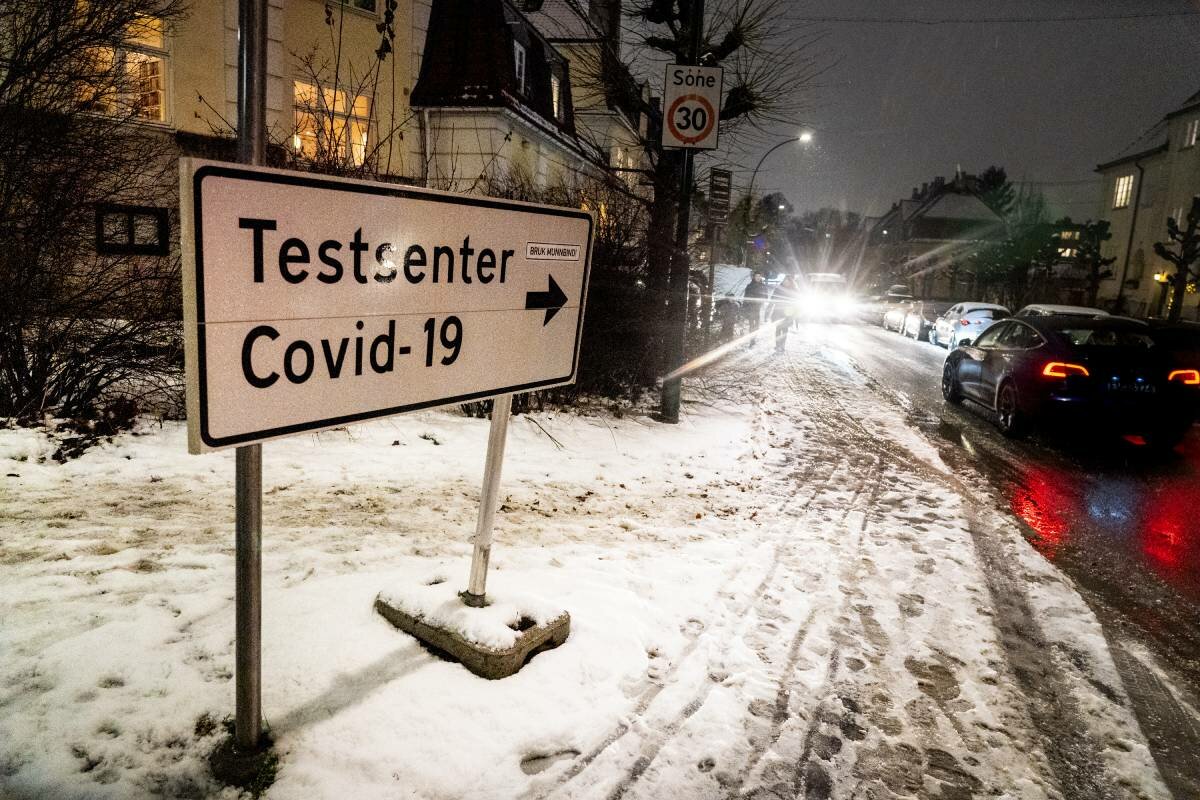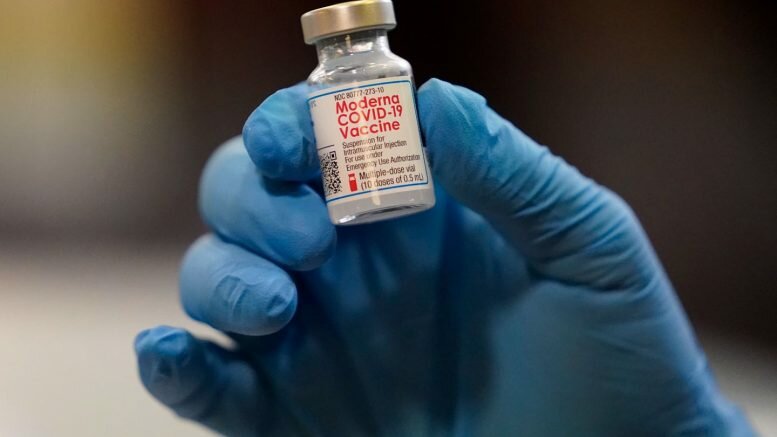It is almost a year since the first positive case of COVID-19 was first detected in Norway. The Norwegian Institute of Public Health (FHI) is now in the process of coordinating the mass vaccination drive.
Although over 230.000 people have had the first dose of the vaccine as of Tuesday, February 16, all has not gone smoothly with the rollout.
The FHI has had to deal with a highly publicized group of deaths due to side effects of the vaccine, growing public frustration with the ongoing severity of lockdown measures, the online multitude of fake news spreading disinformation, and vaccine supplier delays.
A snapshot of COVID-19 in Norway
The outbreak of a new virus was first reported in the central Chinese city of Wuhan in December 2019. According to Helsenorge, “the virus has been named SARS-CoV-2 and is a coronavirus (coronavirus) that can cause respiratory infections in humans. The disease has been named COVID-19.”
Despite the Chinese authorities locking down the whole of Wuhan, essentially putting it in quarantine for 3 months, COVID-19 soon spread worldwide.
The first positive case was detected in Norway on February 27, 2020. The first known superspreader location, for Norway, involved returning travelers from the ski resorts in the Alps. As of February 16, 2021, there have been, according to the FHI, 66,849 reported cases of COVID-19.
There are now three recognized “mutations” of the original COVID-19 strain. Small changes in the genetic material have occurred in variations first discovered in Brazil, South Africa, and The United Kingdom.
Of these, some 2.605 have been admitted to the hospital of which 494 were sent to the Intensive Care Unit (ICU) Some 593 people have died as a result of contracting the virus whilst some 3.655.186 people have been tested.
Every municipality nationwide has also seen the spread of COVID-19. Generally speaking, the municipalities with the largest populations have had higher infection rates. Whilst Oslo has seen 2.62% of its population contract the virus those municipalities further north (and with sparser populations) have seen less spread. As of February 16, Nordland is the least affected municipality with only 0.41% of its population infected.
Although every death is a tragedy, Norway has seen, thus far, a relatively low number of deaths. The death rate (the number of deaths / the number of those infected with COVID-19) in Norway, is just 0.887% comparing with a 0.92% rate in Denmark and a 2.04% rate just across the border in Sweden.
The vaccines: Moderna, Pfizer-BioNTech, and AstraZeneca
The Norwegian government, through the FHI, has approved three COVID-19 vaccines for use: Moderna, Pfizer-BioNTech, and AstraZeneca. Essentially, all the vaccines contain messenger RNA with a copy of part of the coronavirus. The body makes copies of this part of the virus in order for the immune system to practice breaking down and, if infected by the actual virus, recognize and neutralize.
The FHI clearly states that these vaccines “do not contain any live virus… It is harmless on the body’s genetic material (and) is quickly broken down by the body.”
Norway has secured these vaccines through negotiation and cooperation with the European Union (EU). It was not guaranteed that Norway would benefit from any agreement signed between the EU and vaccine suppliers. This is due to Norway’s status as a signatory to the European Economic Agreement (EEA) and not an EU member country.
However, according to a speech given in the Norwegian parliament (Storting) by the Health Minister Bent Høie on January 20, the Norwegian government entered into negotiations last year, which eventually saw all EU countries pledge to resell 3% of their allotment of vaccines to EEA countries (such as Norway).
The FHI estimates that some 36,075 Pfizer vaccines were delivered in one week alone (January 11-17) whilst this month they will have secured some 1.9 million doses of Moderna vaccine and a further 200,000 doses of AstraZeneca. According to Statens legemiddelverk, Norway has now vaccinated 233.362 people with their first vaccination dose as of February 16. This number should increase throughout the year as two new vaccines from Johnson & Johnson and Novavax are in the third phase of testing and development.

The vaccine rollout – main priorities
With a steady supply of vaccines now available, the vaccination process has now begun earnestly. The Norwegian government has stated that the vaccine is free of charge and optional. The first person to receive a first dose of the vaccine was Svein Andersen on December 27, 2020.
The FHI has recommended five major goals, ranked by priority, for the coronavirus vaccination. These are :
1) Reduce the risk of death
2) Reduce the risk of severe disease
3) Maintain essential services and critical infrastructure
4) Protect employment and the economy
5) Re-open society
Though many people are impatient to reopen the country, due to the fatigue of living with the impacts of COVID-19 on the economy and society, it should be noted that this is the final, and thus least important, priority for the government’s mass vaccination program.
Until further vaccines can be secured for the broader general population, the FHI has established a priority list of those who will receive the vaccine. These are:
1. Nursing home residents and selected groups of healthcare personnel
2. Age 85 years and above and selected groups of healthcare personnel
3. 75-84-year-olds
4. 65-74-year-olds and 18-64-year-olds with severe diseases/conditions
5. 55-64-year-olds with underlying diseases/conditions
6. 45-54-year-olds with underlying diseases/conditions
7. 18-44-year-olds with underlying diseases/conditions
8. 55-64-year-olds
9. 45-54-year-olds
10. 44-year-olds and below (i.e the general population)
The Norwegian government has pledged to open mass vaccination centers in late winter / early spring when further vaccines will be secured. Furthermore, over 1.4 million people in Norway have downloaded a coronavirus tracking app that will help notify users of the spread of coronavirus.
Key concerns about the vaccination rollout
Compared to neighboring countries, Norway has been relatively slow in mass vaccination. One of the key reasons for this is the decentralized nature of Norway. The responsibility for the implementation of the vaccine program lies with each municipality, of which Norway has 356. Such decentralized responsibility makes it hard to coordinate efficiently and effectively.
The vaccine rollout has also been hampered by supplier delays. The worldwide demand for all the different vaccines has vastly tested the supply chains of the vaccine manufacturers. Norway did not enter into any independent agreements with individual suppliers and is thus reliant on the EU. Logistical issues have, of late, hampered the delivery of the Pfizer and AstraZeneca vaccine to Europe.
Another key concern is the side effects, real or imagined, of the vaccines. Adverse reactions account for just 0.002% of cases however a spate of deaths has fostered growing national and international interest. Norwegian Broadcasting (NRK) reported that some who died after receiving the vaccine were in poor health and all were, at least, over 80 years old with severe underlying conditions (such as advanced heart failure).
In the age of instant information, misinformation and conspiracy theories – often spread on social media – have helped fuel public skepticism and apathy towards vaccination. Recent polling suggests that whilst 74% of Norwegians do want to take a coronavirus vaccine only 34% were confident that the pace of vaccination is effective.
Light at the end of the tunnel
What should be remembered is that this is an unprecedented situation in Norway’s history. Never has the country seen such a virus spread so rapidly, in modern times and had such an impact on everyday life. Naturally, mistakes, delays, and problems will continue to occur however this should not take away from the great strides that the Norwegian government has made to secure a safe and effective vaccine for the general public.
This week the FHI has announced that it is starting to see the progress of its vaccination program with fewer deaths and hospitalization. The last word should go to Prime Minister Erna Solberg. In a press conference given on January 18, she said “there is light at the end of the tunnel. However, it is quite some time until we can relax.”
For more information about the COVID-19 vaccines, in a variety of languages, please visit the FHI’s information page.
Source: #Norway Today / #NorwayTodayNews
Do you have a news tip for Norway Today? We want to hear it. Get in touch at [email protected]





Be the first to comment on "Everything you need to know about COVID-19 vaccination in Norway so far"